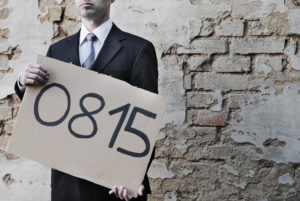“NOTHING IS STRONGER THAN HABIT”
This Ovid quote says it all: How often have we all tried to break a bad habit – without succeeding? Habits are a form of automatic behavior and are therefore very difficult to change. The fact that man is a ‘creature of habit’ also has a positive side, since life would be much more strenuous without these recurring actions. Unfortunately, however, our brains cannot distinguish between good and bad habits.
I bet each one of you has already tried to break a bad habit – whether it is by eating less chocolate, being less of a ‘coach potato’ or avoiding another recurring action that is not good for you. Frequently – very frequently – these efforts fail. In fact, we only manage to keep 12% of the New Year’s resolutions we make. Why are we controlled so much by the power of habit, and why can’t we overcome it? What are the vital ingredients to successfully break a bad habit? I will be devoting this blog and the next (publication on September 11) to these interesting questions.
Habits make life easier
Habits should not simply be condemned, since they can be very useful. They are things we do automatically without requiring any willpower – in other words, we don’t even have to think about them. Does it require much thought when you are brushing your teeth or walking or driving to the office? The answer is no: We simply drive or walk… Routines relieve us of the pressure of having to constantly take decisions. This is why former US President Barack Obama only wore grey or navy suits – as he once told the magazine ‘Vanity Fair’: “I don’t want to make decisions about what I’m eating or wearing. Because I have too many other decisions to make.” Our habits don’t place a burden on our thinking apparatus and, as a result, we consume much less energy. In other words: They allow us to act faster and more efficiently.
It is estimated that between 40% and 95% of our actions occur unconsciously – depending on which study you read. These automatisms give us security and support – they make us feel comfortable. That is because the brain releases the body’s own opiates when we carry out familiar actions – happiness hormones that affirm an action. In other words: we are rewarded if we always do something the same way. We are effectively intoxicated by our own satisfaction, which leads us to do these actions over and over again. That can be very helpful. Unfortunately, the brain cannot distinguish between good and bad habits. And without us noticing, habits limit our sense of perception. They make us inflexible and rigid. We are no longer open to new options.
Escaping from bad habits
I would like you to do a simple exercise so that you can see for yourself how difficult it is to change simple habits: Fold your hands as if you are praying, with your fingers interlocking and your thumbs placed one on top of the other. Next, change the position of your thumbs so that the thumb that is usually underneath is now on top. How does it feel? Unpleasant? The US psychologist Dawna Markova discovered that people need two weeks just to get used to a simple new hand position like this. Until we have become accustomed to it, the brain screams out: “Warning, something is wrong!” So you can imagine how long it takes for a more complex habit to be broken or changed.
To break a bad habit, we first need to know how unconscious automatism actually works. The most important point is: There is a fixed habit loop: cue -> action -> reward -> routine, and back to the start again. The brain responds to the cue and this sets habitual actions in motion. By acting in this way, we are silencing a demand and we then receive a reward.
Chocolate=relaxation
If you have found that eating chocolate relaxes you, this experience is then stored in your brain – and if you want to relax during the evening, your brain automatically thinks: Chocolate! And you will soon be reaching for it (especially if it really is within reach in your kitchen…). You will then be rewarded with a feeling of relaxation. Once you have repeated this action several times, all that is needed is the cue and the desire for a reward in order for this action to occur almost automatically. It takes a lot of effort to react differently to the usual cue.
Each thought and every experience causes our brain cells to connect. And the more we repeat something, the more the areas of the brain become interconnected. Horace Mann, a 19th century US politician, said at the time: “Habit is a cable; we weave a thread of it each day, and at last we cannot break it.” Fortunately, he was not quite right: The cable can be broken apart again – this ‘simply’ requires a lot of awareness, discipline and stamina. A crucial point is that one bad habit should be replaced by another better habit that leads to the same reward – in other words, we must weave a new cable. In my next blog on September 11, I will explain to you how exactly this can be achieved.
Finally, as food for thought until then, I would like to share with you the poem ‘Autobiography in five short chapters‘ by the American singer Portia Nelson (1920-2001):
I walk down the street.
There is a deep hole in the sidewalk.
I fall in.
I am lost … I am helpless.
It isn’t my fault.
It takes me forever to find a way out.
I walk down the same street.
There is a deep hole in the sidewalk.
I pretend I don’t see it.
I fall in again.
I can’t believe I am in the same place.
But it isn’t my fault.
It still takes a long time to get out.
I walk down the same street.
There is a deep hole in the sidewalk.
I see it is there.
I still fall in … it’s a habit.
My eyes are open.
I know where I am.
It is my fault.
I get out immediately.
I walk down the same street.
There is a deep hole in the sidewalk.
I walk around it.
I walk down another street.
© Claudia Kraaz





